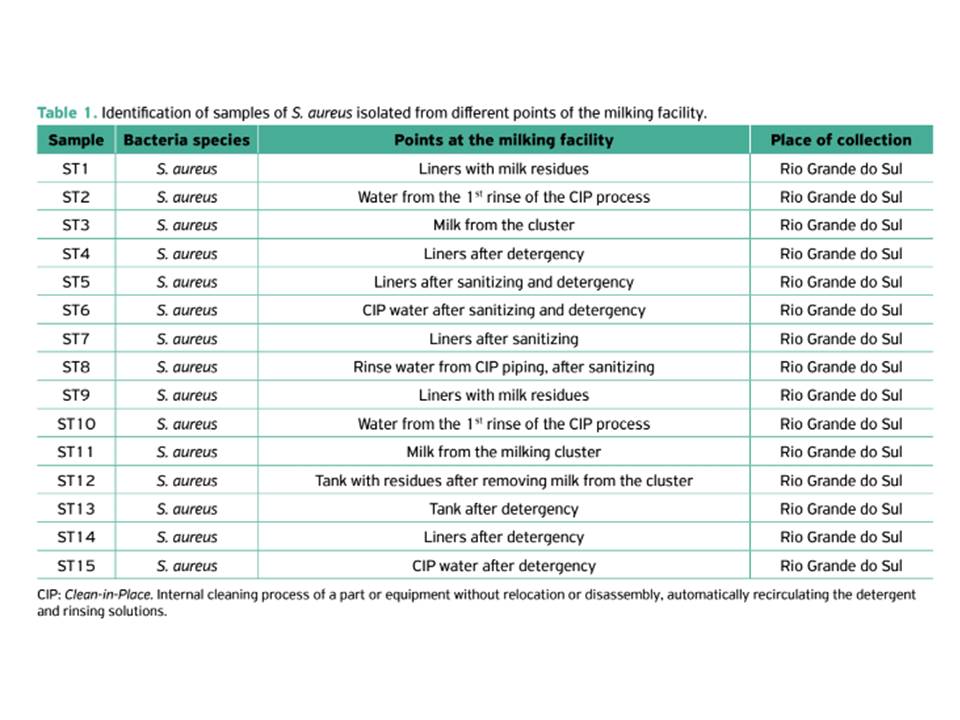Biofilm forming antimicrobial-multiresistant Staphylococcus aureus
DOI:
https://doi.org/10.21708/avb.2021.15.1.9427Resumen
Staphylococcus aureus is one of the main agents isolated from bovine mastitis cases, characterized by lower cure rates compared to other pathogens causing this disease. This phenomenon is mainly explained by the multiresistance acquisition to antimicrobials and the ability of S. aureus to form biofilms on biotic and abiotic surfaces. In this work 15 samples of S. aureus isolated from the automated milking facility were analyzed regarding the resistance profile to antimicrobials, virulence factors (capsule production, hemolysin, and protease) and adhesion capacity under different temperatures. All isolates showed methicillin-resistant (MRSA) characteristics and multidrug resistance profile to the antimicrobials tested (penicillin G, chloramphenicol, oxacillin, cephalexin, tetracycline, amoxicillin + clavulanic acid, sulfa + trimetropim, gentamicin, doxycycline, ceftiofur, neomycin, and vancomycin) with an IRMA index between 0.5 and 1.0. Five isolates were resistant to vancomycin (VRSA), two were resistant to all active principles, and the others to at least six of these drugs. Adhesion capacity and biofilm formation were found in 3 of the 5 evaluated temperatures, including the cooling conditions. Regarding the virulence factors, 86.7% of the isolates formed capsules, 60% revealed the presence of protease, 26.7% expressed the α-hemolysin factor, and 13.3% of them presented β-hemolysin. The fact that all isolates presented MRSA characteristics represents a potential risk to those exposed to this agent, and the formation of biofilm in liners even after the use of detergents and sanitization highlights the urgency of searching for alternatives for dispersion of the biofilm by S. aureus in the automated milking facility.
Descargas

Descargas
Publicado
Número
Sección
Licencia
Autores que publicam na Acta Veterinaria Brasilica concordam com os seguintes termos: a) Autores mantém os direitos autorais e concedem à revista o direito de primeira publicação, com o trabalho simultaneamente licenciado sob a Licença Creative Commons Attribution que permite o compartilhamento do trabalho com reconhecimento da autoria e publicação inicial nesta revista. b) Autores têm autorização para assumir contratos adicionais separadamente, para distribuição não-exclusiva da versão do trabalho publicada nesta revista (ex.: publicar em repositório institucional ou como capítulo de livro), com reconhecimento de autoria e publicação inicial nesta revista. c) Autores têm permissão e são estimulados a publicar e distribuir seu trabalho online (ex.: em repositórios institucionais ou na sua página pessoal) a qualquer ponto antes ou durante o processo editorial, já que isso pode gerar alterações produtivas, bem como aumentar o impacto e a citação do trabalho publicado (Veja O Efeito do Acesso Livre).


 Esta obra está licenciada com uma Licença
Esta obra está licenciada com uma Licença 